
How America "decoupled" the dollar from gold and turned it into the world's main currency
Arina Kenbayeva / May 16, 2022
This paper explores the historical trajectory of the U.S. dollar’s rise to global dominance, focusing on the pivotal shift from the gold-backed Bretton Woods system to a fiat currency regime. Key arguments and phases are outlined below:
INTRODUCTION
I think almost everyone has a certain amount of dollars in their account, and for good reason. This currency is an international currency and can be easily exchanged anywhere in the world. But how did the dollar gain such worldwide recognition and took over the international market?
In this paper, I will try to explore how the United States came to global financial dominance.
In 1944, the Bretton Woods Agreement was adopted. The gold-denominated standard, based on gold and two currencies - the US dollar and the British pound sterling - was introduced, ending the monopoly of the gold standard. Under the new rules, the dollar became the only currency directly tied to gold. The US Treasury guaranteed the exchange of dollars for gold for foreign government agencies and central banks at a rate of 35 dollars per troy ounce. Gold has been transformed from a primary currency to a reserve currency.
At the end of 1960, the high inflation rate in the United States made it impossible to maintain the gold peg at the same level, the situation was also complicated by the US foreign trade deficit. The French president Charles de Gaulle's desire to exchange the country's existing dollars for gold also played a major role. His actions also prompted other countries to do the same. In 1971, President Richard Nixon prohibited "temporarily" the exchange of dollars for gold and carried out several devaluations: in 1971, the price of a troy ounce of gold rose to 38 dollars, and in 1973 to 42.22 dollars. Without resuming the exchange for gold, the Jamaican Currency System was created in 1976, which formally abolished the dollar's peg to gold, but kept the dollar as a world reserve currency with a floating exchange rate.
Now, let's look at this topic in more detail.
As we know from the lessons of history, the territory of America was inhabited by people from Britain, Spain, Portugal, and France, as a consequence of which such currencies as pounds, pesos, and so on operated in the country. To avoid financial chaos, it was necessary to bring all calculations to one standard. During the War of Independence in 1795 "continental currency '' began to issue and it was not backed by gold, but only by future revenues to the budget. This currency was hastily and poorly manufactured, but most importantly, it was not protected against counterfeiters - there were hundreds of thousands of fake banknotes walking around. As a result, in 8 years by the end of the war, it had depreciated 40 times, and as a result paper money had to be abolished.
The first dollars appeared at the proclamation of independence in 1785. They were made in the form of silver coins, and the payments were made with them or with bars of gold and silver. Paper money had not yet been used.
But the idea of printing paper money again came to the government in 1837. At that time the "free banking era" began - the banks were given the task of printing banknotes, without saying a word about how much should be printed, what they should look like, and so on. As a result, counterfeit money was back in circulation in the country. Therefore, Banknotes were taken out of circulation again, leaving only coins. This monetary system existed until the Civil War in 1861. The opposing sides "North" and "South" began to print their own dollars, but eventually, the Southerners lost the war, their currency depreciated, and the North's dollars became the national currency of the United States throughout the territory. They were the origin of today's dollar. All dollars were already backed by gold.
This was followed by the industrial revolution of the 19th century, which caused an explosion in productivity, leading to a surplus of goods, which spurred an expansion of international trade. As a consequence, the problem of comparing different currencies in mutual settlements appeared, causing gold to be recognized as the universal equivalent of currencies. Most major countries had gold and minted coins from it. Pegging national currencies to gold helped to make the proportions of national currencies comparable, for instance, one unit of one currency was worth 10 grams and the other 20 grams, which meant that currencies were exchanged in the proportion of 2 to 1 accordingly.
Britain was the world leader at the time, and so it was in the pound that the gold exchange rate was set at 4.248 pounds per ounce. Since no one could equal the volume of trade with Great Britain, and even the fact that other currencies were also backed by gold, in the end, all came to express their currency through the British pound.
However, the outbreak of World War I shook the world's financial system, and Great Britain was no longer able to provide its currency. In order not to go bankrupt, in 1922 it was proposed to create a "gold-device standard", which implied the use of dollar and gold as a universal measure of value. The dollar was fixed to gold, and the pound was fixed to the dollar, but the pound could no longer be exchanged for gold.
By 1931, this system began to break down too because of the Great Depression. The U.S. government was forced to change the gold content of the dollar from $20.6 to $35 per ounce, which was about minus 41%, and Great Britain decoupled the pound from the dollar.
Since World War I did not affect the U.S. directly, the country began to financially "take over" Europe. Britain and Europe imposed prohibitive duties to protect themselves. However, the U.S. banking system became obsessed with the idea of taking over world markets with the dollar. World War II did much to help the dollar become the world's currency.
On June 1, 1944, at the American resort of Bretton Woods representatives from 44 countries gathered at a conference to address the issue of the postwar financial structure of the world. The Americans proposed a system similar to the previous one, but with some changes: the dollar was pegged to gold at $35 an ounce, and all other currencies fixed their rates to the dollar and could not change them by more than 0.75 percent in any direction. No currency other than the dollar and the pound could be exchanged for gold. To buy gold, you had to buy a dollar or pound first.
Though the British pound was not taken out of the "game", it was left far behind the dollar, because more than 70% of all gold in the world belonged to the U.S., and the dollar was used in 60% of all settlements in the world.
In exchange for ratifying the agreement, the U.S. offered huge loans to rebuild Europe after the war, but on a small condition: they could only print as much of their currency as they had dollars, the world's reserve currency. Thus, the U.S. controlled almost the entire economy of the earth.
Later, the U.S. established the International Monetary Fund, the World Bank, and the General Agreement on Tariffs and Trade.
Soon most countries realized that they were financing U.S. and British deficits, as the foreign debts of these countries exceeded the level of the gold reserve. The main reserve currency became unsustainable, contrary to the principles of the Bretton Woods system. There were more dollars than the gold that backed it. However, in the 60s, the system functioned as it was, while the USA was leaving the issue of the balance of payments deficit, also the war in Vietnam played into the hands of the USA because a lot of money had to be spent on it - dollars were printed, bank rates went down, inflation went up with great speed, and the American goods became less competitive because of it.
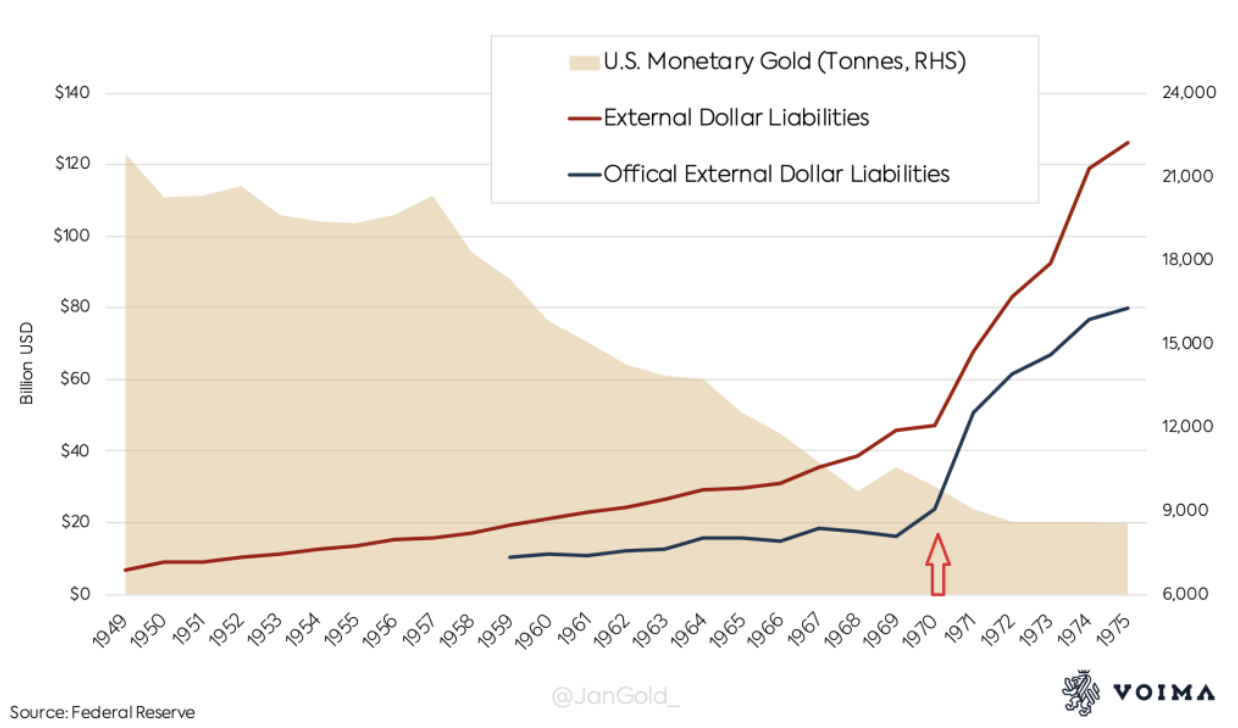
In 1960, the price of gold rose to $40 an ounce on the private market, instead of the official $35, and soon the crisis began. However, the collapse, which was in the previous times, did not follow - the countries with large reserves of dollars were ready to support the financing to avoid the financial chaos. Despite the huge foreign funding, the US balance of payments became a deficit again, and low banking rates led to an outflow of capital from US securities to other countries. Also, as Europe recovered, the balance of trade began to shift in its direction.
On the private market, the price of gold has already reached $60, indicating that the dollar has almost doubled in value.
So what steps have been taken to solve the dollar problem on the world market?
The first big step was taken by Charles de Gaulle, who said that France had accumulated 1.5 billion dollars and demanded that it be exchanged for gold at the original rate of 1 ounce to 35 dollars, which is about 1,300 tons of gold. By withdrawing from NATO and other methods of pressure on the U.S., they managed to get the gold back to France. France was also followed by Germany. In all, more than 3,000 tons were taken out of the U.S.
Because of the inability to supply the dollars with gold, the redistribution of the gold reserve to Europe, and the large balance of payments deficit, confidence in the dollar was rapidly declining.
The end of the Bretton Woods system came in the early 1970s thanks to US President Richard Nixon. It was he who decided that the U.S. would unilaterally abandon the pegging of the dollar to the price of gold. Because the withdrawal was sudden and took place without the consent of other countries, it went down in history as the “Nixon Shock”. For by this time the number of dollars held outside the United States exceeded the number held in the United States itself. And countries with large reserves of dollars were suddenly deprived of the ability to exchange dollars for gold.
Why did Nixon take such a risky step? As stated in the paper “Ending Bretton Woods: evidence from the Nixon tapes” by Butkiewicz and Ohlmacher through the secret White House tapes we learn how the new economic policy decision was really made. Nixon was not sure what was best to do to solve the financial problems and so took no action during the May 1971 currency crisis, saying that the dollar was strong despite speculative pressures. In the months that followed, the Undersecretary of the Treasury for Monetary Affairs Volcker and Treasury Secretary Connally developed a plan to suspend the convertibility of gold, temporarily float the dollar and impose wage-price controls, as well as other policy initiatives. They devised this plan to divert people's attention away from exchange rate changes. Nixon, not understanding the economics and importance of the plan, wanted to delay action on the exchange rate, hoping that other policies would solve the problem.
Moreover, Nixon wanted to postpone this plan until Congress returned in September, but as losses were mounting by the day, he had to act three weeks earlier.
In 1971, it was believed that the floating exchange rates that had existed in the 1930s were a disaster and that fixed rates were needed to promote trade. The Nixon administration sought to reorganize fixed exchange rates. Faced with a policy trilemma, however, Nixon opted for floating rates.
So on 15 August Nixon went on television and very clearly articulated the decision - The dollar will no longer be backed by gold. The U.S. froze wage prices for 90 days to suppress inflation. He also imposed a 10 percent tariff on all imports, which will not be lifted until a new international monetary agreement is reached. This put the rest of the country in a difficult position because it was only done unilaterally. This policy change had enormous consequences.
As Jeffrey Garten, author of “Three Days at Camp David: How a Secret Meeting in 1971 Transformed the Global Economy” writes, domestically the Nixon shock was received with great approval. It had the effect Nixon was seeking. Politically, it was seen as taking control of a situation that was getting worse - namely, rising inflation and a growing trade imbalance.
The wage and price freeze had never been done in peacetime and was therefore very controversial. Nixon knew that by doing this he was showing that the U.S. was willing to take drastic steps to deal with inflation. This domestic measure provided credibility to the U.S. from other countries.
Also, the U.S. sent Paul Volcker and then John Connelly to all the key countries for negotiations. People calmed down because they realized that change had to happen. However, it took time for people to get used to the new financial impositions.
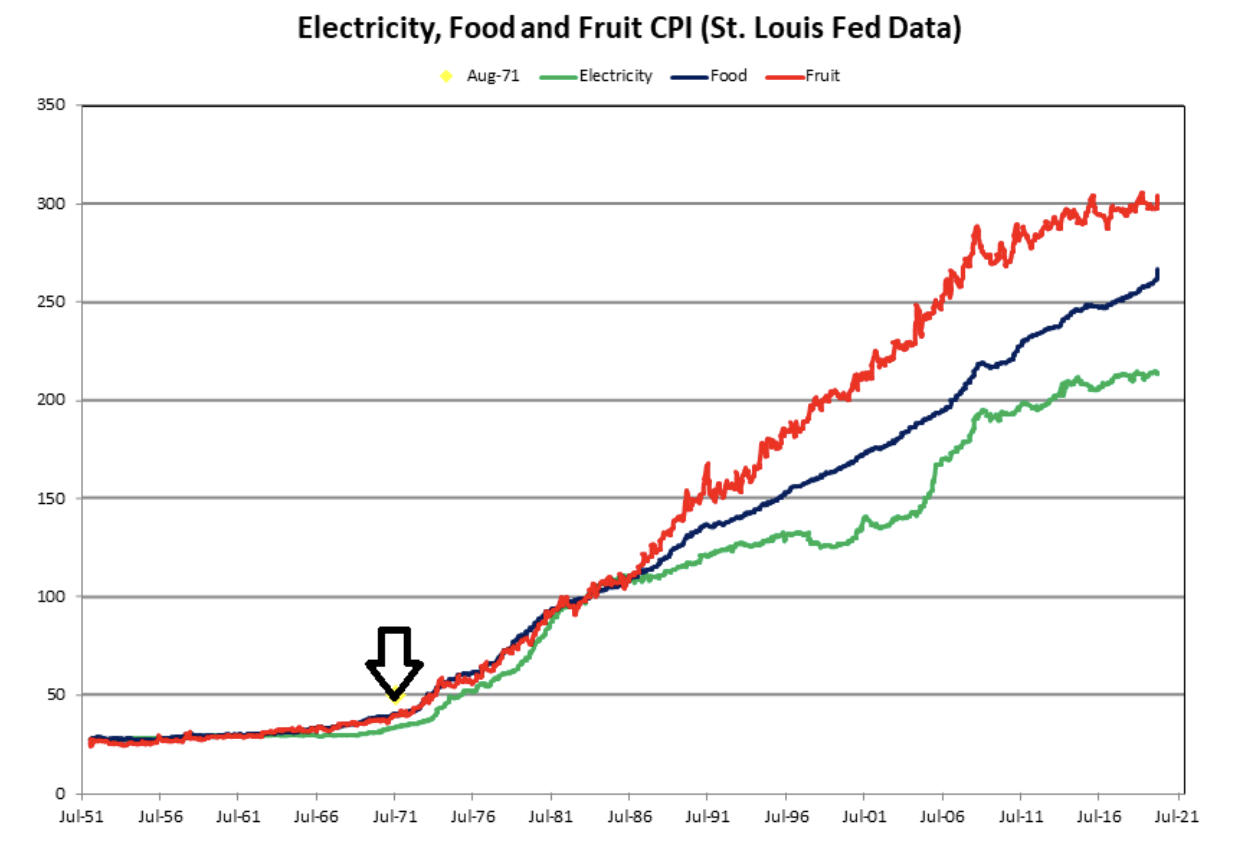
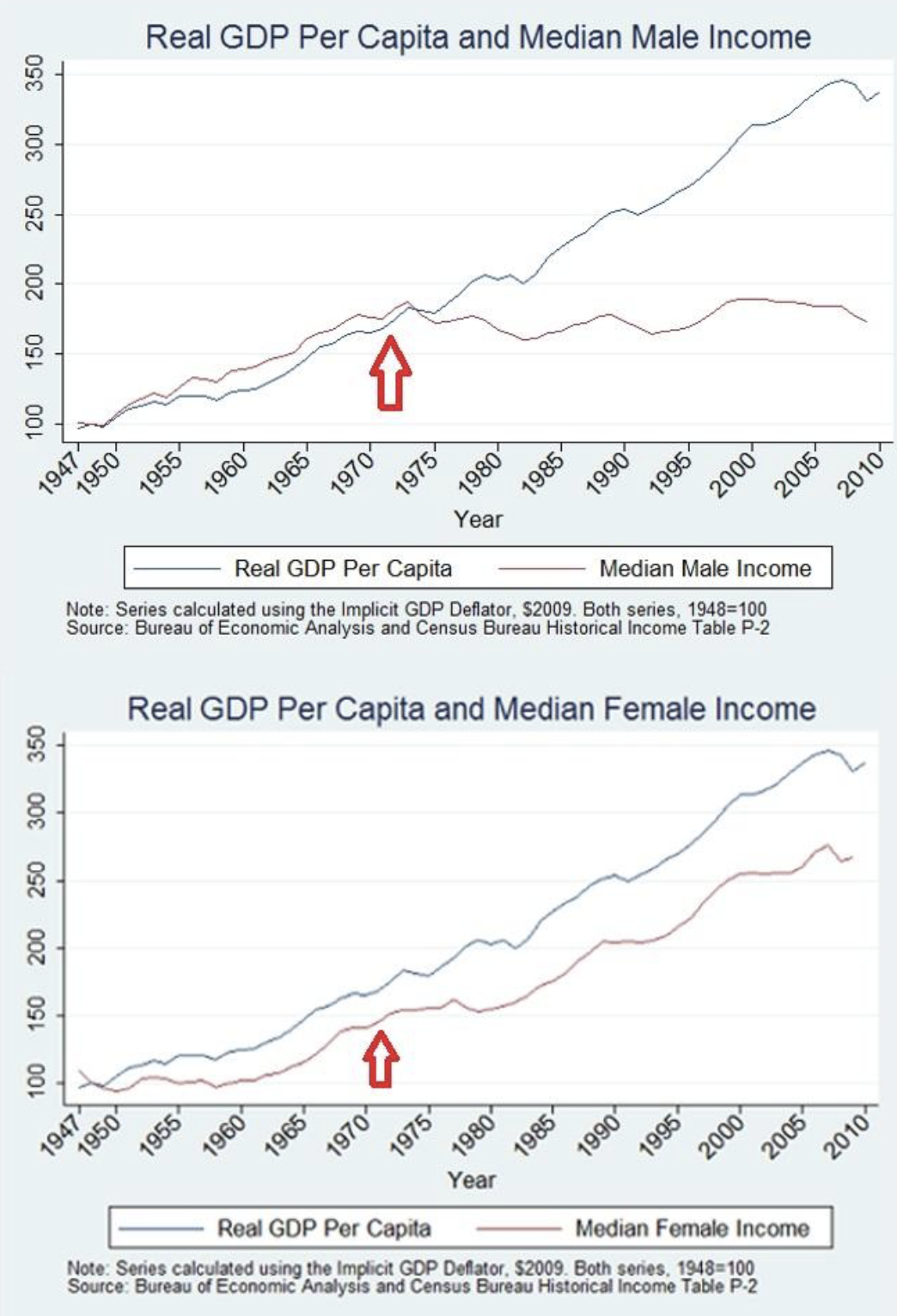
This change brought both advantages and disadvantages. On the plus side, government-backed money tends to be more stable than commodity-based currency; central banks now have more flexibility to "protect" the economy from sudden downturns in the business cycle; there will be no volatility in the economy because of actions to protect gold reserves. On the minus side, the stagflation of the 1970s, serious recessions in the U.S., and gold provided a self-regulating effect on the economy and currency, while the "Nixon shock" gave the government the ability to manipulate the variables.
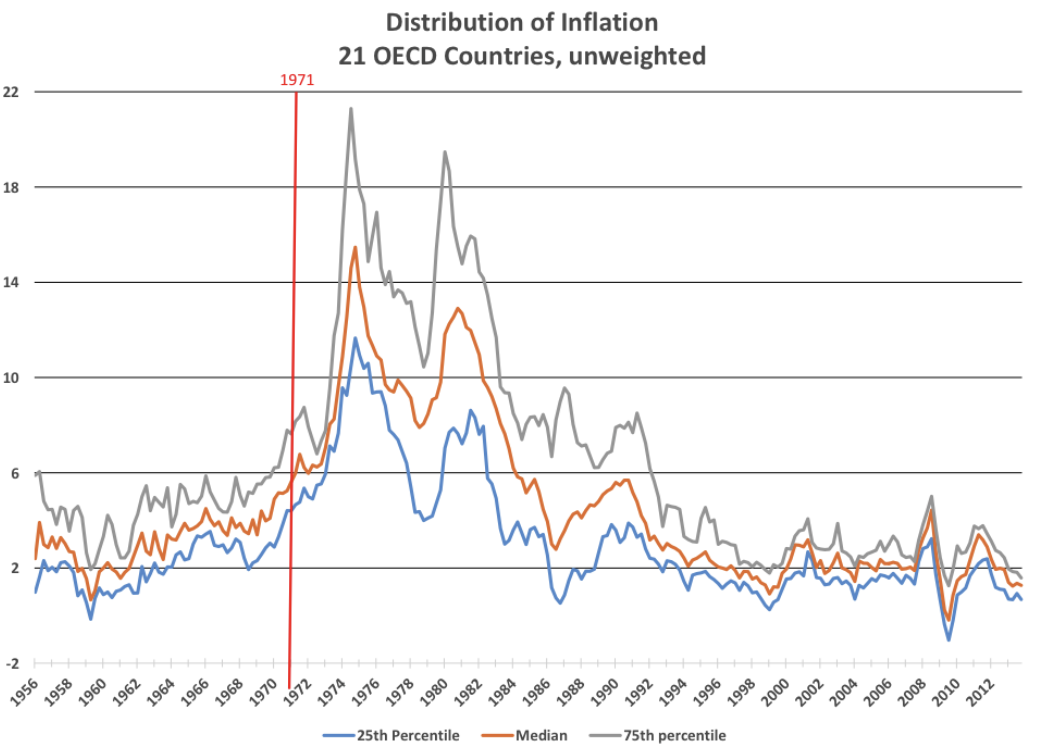
Inflation after “Nixon Shock” has risen sharply in many countries. The median inflation rate exceeded 10 percent, and the spread between inflation rates in different countries increased steeply. However, the situation has been improving since the mid-1980s. By the mid-1990s, prices began to rise at a remarkably steady rate of 2 percent per year. This rate was maintained till the financial crisis in 2008. It should also be noted that the range of inflation in OECD countries over the past 20-plus years has been about half that of the Bretton Woods era.
Analyzing the picture above, we can conclude that inflation targeting has done a better job of coordinating monetary policy across countries than the Bretton Woods system because it is much easier to maintain macroeconomic stability with a flexible exchange rate.
One of the bad consequences of the “Nixon shock” is that inequality between people has increased. An increase in the money supply leads to an increase in the value of hard-supplied assets, such as houses for example. Many people have begun to keep their wealth in financial assets. Thus, disproportionate access to financial assets causes a stratification of society in terms of wealth, since the poorer a person is, the less access he has to financial assets.
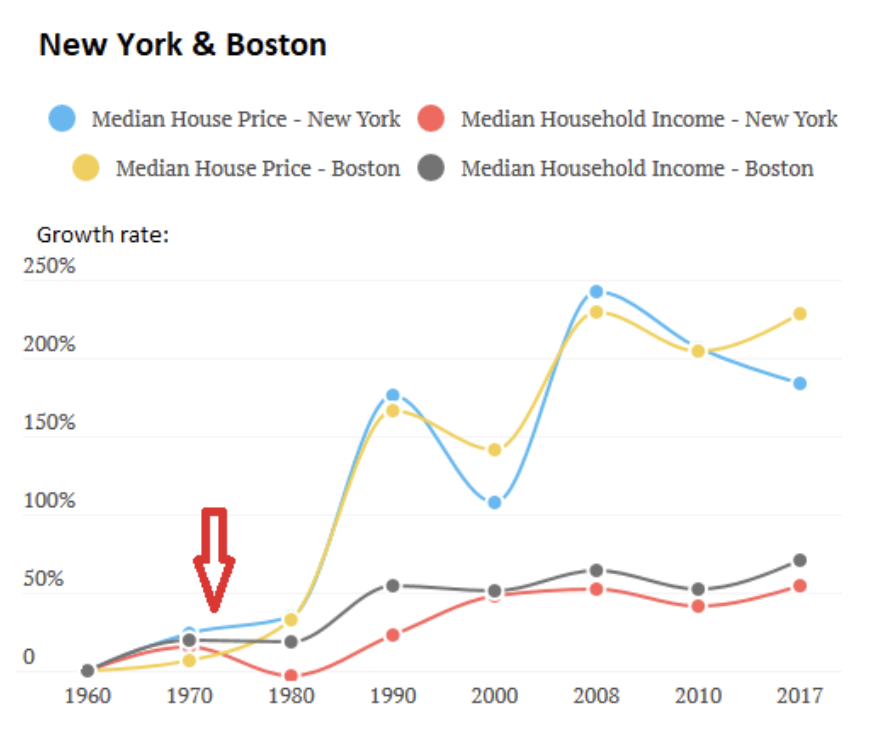
Under the Bretton Woods system, the dollar became firmly associated with reliability, autonomy, and security, and large reserves in other countries prevented it from depreciating.
The U.S., in turn, no longer had any restrictions on issuing unsecured money, and it was easy to take advantage of this.
The other countries were forced to switch to a floating exchange rate of their currencies, the dollar devalued to gold by 7.9%, other currencies increased by 7-19%, and the USA canceled a 10% duty increase.
A good way to visualize the impact of the international monetary system in the Bretton Woods era is to plot exchange rates over the long term for the 19 members of the eurozone.
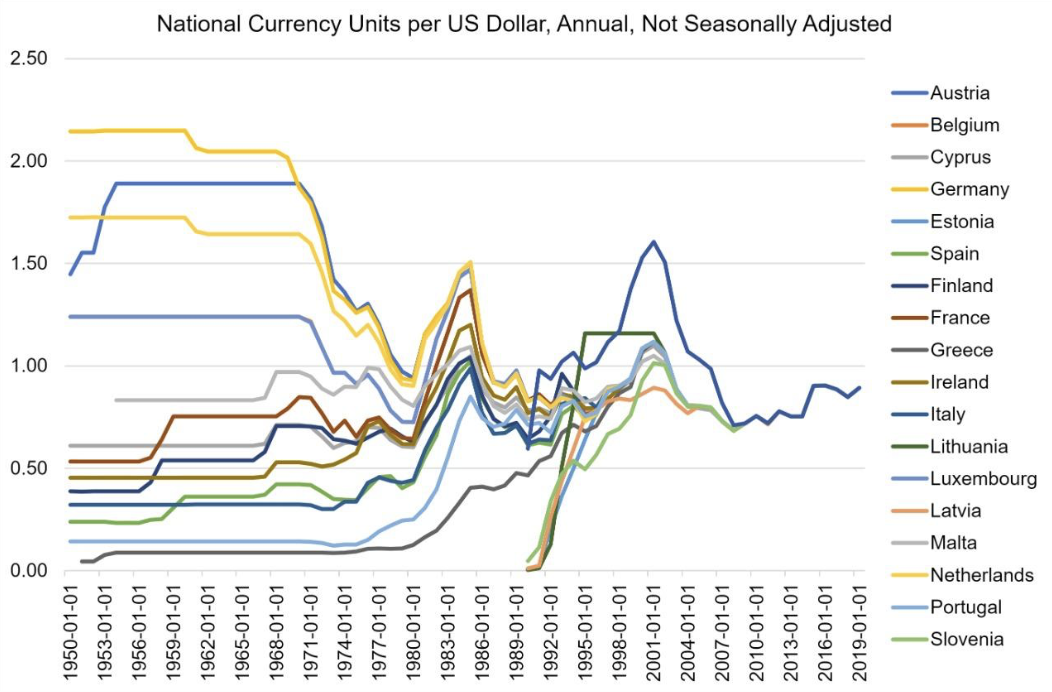
In 1976 the Jamaican Conference officially declared the complete refusal of a gold standard in the world financial system, and the dollar has remained the main world reserve currency "by inertia" until now.
To this day, scholars debate whether the abolition of the gold standard has helped the global economy. Some believe that the gold standard restrained the growth of the money supply and that after the restrictions were lifted, the elite, by reducing the purchasing power of ordinary people, injected large amounts of unsecured paper money into the economy, which eventually came back to them. The elite makes their wealth out of thin air at the expense of everyone else. In the end, it's the ordinary, peaceful citizens, who suffer.
Another group of people argues that if we go back to the gold standard, prices will destabilize, leading to episodes of severe deflation and inflation. Moreover, in the event of a financial crisis, the government would have little flexibility to prevent or limit potential damage.
It is believed that with the "Nixon shock" the dynamic process of globalization began, the formation of the world economy with the resulting intensification of international competition in the commodity, financial and currency markets. The Bretton Wood agreement was inherently forced and conditioned by the consequences of World War II. The U.S. was very interested in it because the entire developed pre-war world was in ruins and the economic development of the U.S. would have been impossible without the simultaneous recovery of the economies of Europe and Japan. Under these conditions, the dollar, as the only currency with a gold equivalent, became a stabilizer of production, and financial and trade relations were restored. The refusal to exchange the dollar for gold was the final signal of the end of the postwar economic recovery. The abandonment of the gold standard was not an easy process, but it provided a flexible mechanism for balancing exchange rates that supported global investment and trade expansion.
So, concluding all that has been written above, I can say that the ban on the exchange of dollars for gold was an important step for the economy and did not prevent the dollar from becoming a major world currency, despite its "detachment" from gold.
References
-
James Butkiewicz “Ending Bretton Woods: Evidence from the Nixon Tapes,” (with Scott Ohlmacher), Economic History Review, November 2021, Vol. 74, No. 4, pp. 922-945.
-
Jeffrey E. Garten “Three Days at Camp David: How a Secret Meeting in 1971 Transformed the Global Economy”
-
Matthew Johnston “How the Bretton Woods System Changed the World”, January 2022 https://www.investopedia.com/contributors/53788/
-
Bordo, Michael D. "Gold Standard." In The Concise Encyclopedia of Economics. Library of Economics and Liberty. Article published 2008. https://www.econlib.og/library/Enc/GoldStandard.html
-
Peter M. Garber “The Collapse of the Bretton Woods Fixed Exchange Rate System”
-
Bordo, M D (2017) “The operation and demise of the Bretton Woods system: 1958 to 1971”, NBER, Working Paper No 23189
-
Will Kenton “Nixon Shock” https://www.investopedia.com/terms/n/nixon-shock.
-
Harold James “A Digital Nixon Shock?” https://www.project-syndicate.org/commentary/digital-money-alternatives-to-dollar-by-harold-james-2021-07
-
Сергей Гуриев “Как золотой стандарт оказался на свалке истории” /“How the gold standard ended up in the dustbin of history” https://www.forbes.ru/mneniya-column/makroekonomika/236618-kak-zolotoi-standart-okazalsya-na-svalke-istorii
-
Евгений Беляков “Как Америка "отвязала" доллар от золота и превратила его в главную мировую валюту” / “How America "untied" the dollar from gold and turned it into the world's main currency” https://www.kp.ru/daily/28317.5/4459728/
-
Шитов Андрей “"Никсоновский шок" полвека спустя: теряет ли доллар свое значение?” / "The Nixon Shock Half a Century Later: Is the Dollar Losing Its Value?”